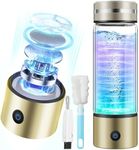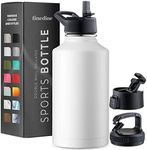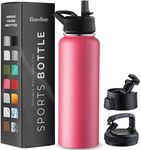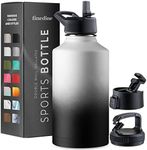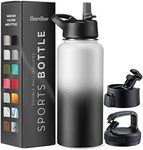Buying Guide for the Best Water Purification Bottle
Choosing the right water purification bottle is essential for ensuring you have access to clean and safe drinking water, especially when traveling, hiking, or in emergency situations. The right bottle will depend on your specific needs, such as the type of contaminants you expect to encounter, the volume of water you need to purify, and the ease of use. Understanding the key specifications will help you make an informed decision.Filtration TechnologyFiltration technology refers to the method used to remove contaminants from water. This is important because different technologies target different types of impurities, such as bacteria, viruses, protozoa, and chemicals. Common technologies include activated carbon filters, UV light, and ceramic filters. If you're traveling in areas with questionable water sources, a bottle with a comprehensive filtration system that targets a wide range of contaminants is ideal. For everyday use, a simpler filter that removes chlorine and improves taste might suffice.
Filter LifespanFilter lifespan indicates how long a filter can effectively purify water before it needs replacement. This is crucial for maintaining the effectiveness of the bottle. Lifespan is usually measured in liters or gallons. If you plan to use the bottle frequently or for long trips, look for a filter with a longer lifespan to avoid frequent replacements. For occasional use, a shorter lifespan may be adequate.
Flow RateFlow rate is the speed at which water passes through the filter and is ready to drink. This is important for convenience and efficiency, especially when you need water quickly. Flow rates can vary significantly; some bottles offer immediate access to water, while others may take a few minutes. If you're often in a hurry or need to hydrate quickly, opt for a bottle with a higher flow rate. For leisurely activities, a slower flow rate might not be an issue.
CapacityCapacity refers to the amount of water the bottle can hold at one time. This is important for determining how much water you can carry and purify in one go. Capacities typically range from small, personal-sized bottles to larger ones suitable for group use. If you're hiking or traveling alone, a smaller capacity might be sufficient. For group activities or longer trips, a larger capacity will be more convenient.
Weight and PortabilityWeight and portability are about how easy it is to carry the bottle with you. This is crucial for comfort and practicality, especially during physical activities like hiking. Lighter bottles are easier to carry but may have fewer features or smaller capacities. If you're planning to carry the bottle over long distances, prioritize lightweight and compact designs. For stationary use, weight might be less of a concern.
MaterialThe material of the bottle affects its durability, weight, and safety. Common materials include plastic, stainless steel, and glass. Plastic bottles are lightweight and affordable but may not be as durable. Stainless steel is more robust and can keep water cool, but it's heavier. Glass offers purity and taste benefits but is fragile. Choose a material based on your priorities: durability for rugged use, lightweight for portability, or purity for taste.








